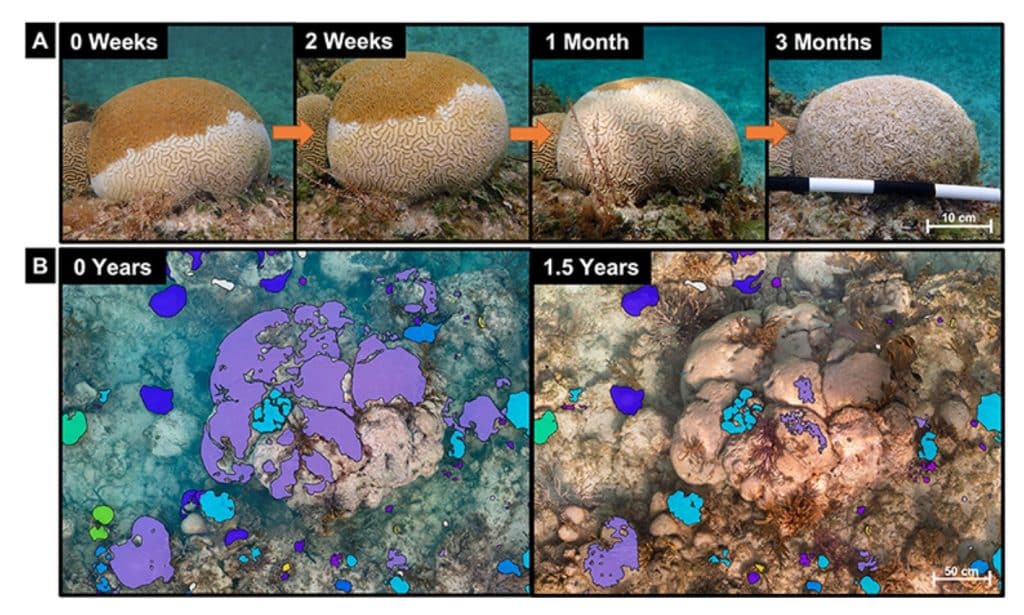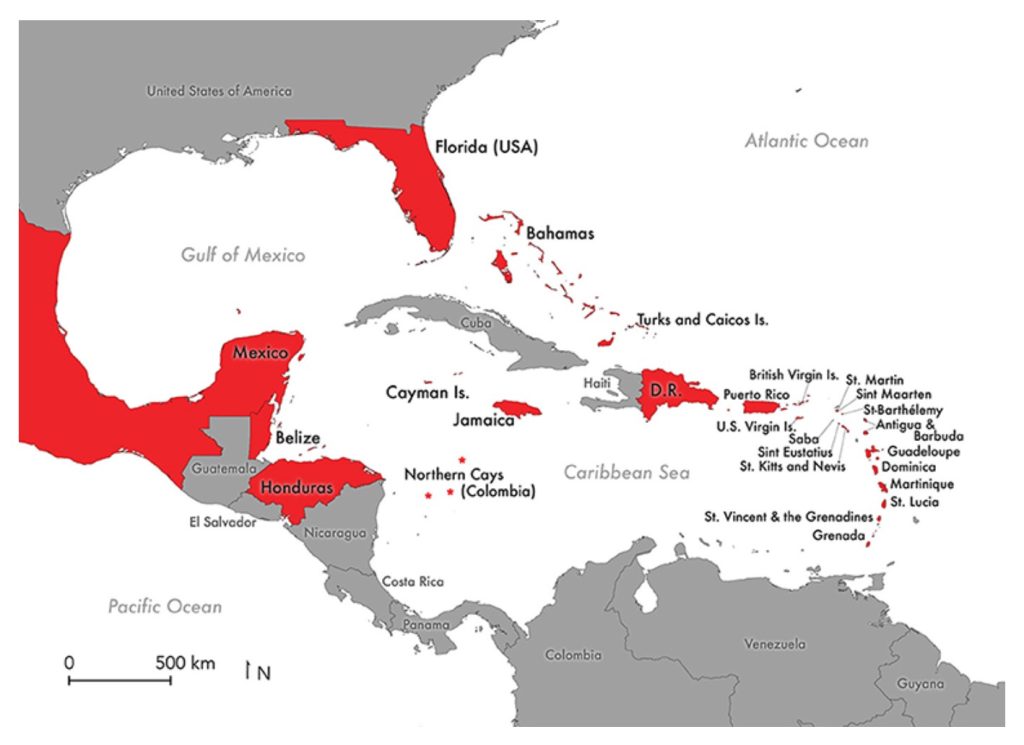We’re excited to share our latest publication in Frontiers for Young Minds, “An Underwater Pandemic Is Wiping Out Caribbean Corals.” This paper sheds light on the devastating impact of Stony Coral Tissue Loss Disease (SCTLD), a deadly disease that is wreaking havoc on the Caribbean’s coral reefs. Frontiers for Young Minds is dedicated to making cutting-edge science research and discoveries accessible and exciting for younger audiences. The platform provides a collection of freely available scientific articles shaped by the input of young peers and has been recognized for its quality by the American Library Association.
In many parts of the Caribbean, diving underwater reveals a world of colorful fish, sponges, and other marine creatures, all thriving in the dazzling undersea rainforest created by rock-like animals called corals. However, just like humans, corals can get sick, and SCTLD is spreading rapidly throughout the region, infecting and killing some of the world’s oldest and largest animals at an alarming speed.
This paper, published by PIMS research associate Maya Gomez, communications director Lily Haines and senior scientist Dr. Valeria Pizarro, explains what we know about SCTLD so far, how to spot it in the ocean, how far the disease has spread, what kinds of corals are getting sick, and how we can work together to stop it. Almost half of the 45 known species of reef-building corals in the Caribbean can catch this disease, and once infected, a coral colony that took hundreds of years to grow can die within a matter of weeks or months.

SCTLD was first spotted off the coastline of Florida in 2014 and has since spread to more than 20 more countries throughout the Caribbean, reaching from Mexico to Honduras to St. Lucia. The disease spreads extremely quickly through the water, and similar to COVID-19, it is now considered a pandemic. It can even be spread through ballast water from commercial shipping vessels and recreational boats, making it a complex problem to tackle.

As a result, Caribbean corals are dying faster than ever before, and reef habitats are quickly transforming from coral-dominated havens to algae-covered graveyards. This rapid decrease in live coral is creating an imbalance between the rate that the remaining stony corals can build new reefs and the rate that ocean currents are eroding the coral skeletons that are left behind. Sea creatures are already starting to lose their homes, and before long, humans will begin to notice the effects as well, especially when it comes to reduced fishing, tourism, and coastal protection.
It’s a dire situation, but there is hope. By working together, we can prevent the spread of SCTLD and reverse the decline of Caribbean coral reefs. Our paper demonstrates ways to slow the spread of SCTLD, including treating infected corals with antibiotics and disinfecting gear before moving to a new site. Additionally, everyone can contribute by learning how to identify the disease and reporting any sightings to local conservation organizations.
At the Perry Institute for Marine Science, we are committed to tackling this problem and working with others to preserve the Caribbean’s coral reefs. We believe that it’s crucial to raise awareness about the issue and to encourage everyone to take action. That’s why we are proud to have released this publication in Frontiers for Young Minds, as it helps make this important information accessible to younger audiences who will play a critical role in protecting the future of our oceans.
We invite everyone to read our latest publication and to join us in our efforts to protect these vital ecosystems for future generations. Let’s work together to stop the spread of SCTLD and to ensure that the vibrant, colourful, and diverse world beneath the waves continues to thrive.




